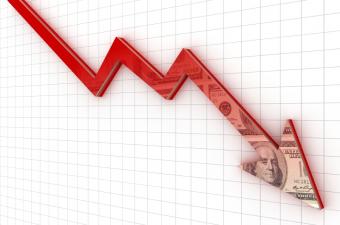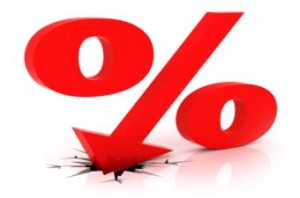The good thing about economic recovery, even when it’s not living up to expectations, is that forecasters always remain optimistic for tomorrow.
Despite many beginning-of-the-year
predictions about spring growth in the housing market falling flat, and despite a still chugging economy that changes its mind quarter-to-quarter, economists at the
National Association of Realtors and other industry groups expect an uptick in the economy and housing market through next year.
The key to the NAR's optimism, as expressed by the organization's chief economist, Lawrence Yun, earlier this week, is a hefty pent-up demand for houses coupled with expectations of job growth—which itself has been more feeble than anticipated. "When you look at the jobs-to-population ratio, the current period is weaker than it was from the late 1990s through 2007," Yun said. "This explains why Main Street America does not fully feel the recovery."
Yun’s comments echo those in a
report released Thursday by
Fitch Ratings and
Oxford Analytica that looks at the unusual pattern of recovery the U.S. is facing in the wake of its latest major recession. However, although the U.S. GDP and overall economy have occasionally fluctuated quarter-to-quarter these past few years, Yun said that there are no fresh signs of recession for Q2, which could grow about 3 percent.
A major key to housing growth, of course, is job growth. The U.S. overall has recovered nearly all of the eight million jobs lost to the Great Recession and, according to Yun, employment is expected to grow 1.6 percent this year and 1.9 percent next. Similarly, the GDP is on course to grow 2.2 percent this year and about 2.9 percent in 2015.
Eric Belsky, managing director of the JointCenter for Housing Studies at Harvard University, said that growth in the stock market and the recovery in housing, along with pent-up demand, are major factors driving the economy right now, leading economists like Yun and Belsky to suggest that housing will improve, just not on the schedule many other economists had expected.
One thing to keep in mind is that 2014’s spring housing sales figures are being compared to those from 2013, which saw impressive gains‒‒existing-home sales rose more than 9 percent to nearly 5.1 million last year‒‒after four years of sagging sales. Because of tight inventories and rising sales last year, the median existing-home price rose 11.5 percent to just over $197,000. Still, according to NAR, sales figures will likely decline about 3 percent over the rest of this year to just over 4.9 million, then trend up to more than 5.2 million in 2015.
According to Yun, home price growth is likely to moderate from more new home construction. "Based on our forecast for this year, the median home equity gain over three years is expected to be $40,000," he said. "A gap between new and existing-home prices from rising construction costs shows that prices are well supported by fundamentals in most of the country."
Housing starts have stayed below 1 million a year for the past six years, but need to reach the long-term average of 1.5 million to balance the market. "Because of the prolonged slowdown in construction, we now need 1.7 million housing starts per year to catch up," Yun said.
The sluggish recovery in housing starts is greatly affected by the fact that construction costs are rising faster than inflation. Add to that labor shortages in the building trades, and the onerous financial regulations preventing small banks from giving construction loans to small local builders, and it’s no wonder why construction starts are behind schedule, Yun said.
Dennis McGill, director of research for
Zelman & Associates in New York, offered some hope. McGill said that his firm's most recent analysis of Census Data shows an average of only 720,000 housing starts annually from 2010 through 2013. "But our projections over the next five years exceed an average of 1.9 million," he said. "We won’t ramp up to that level right away, but if you average housing starts for the entire period from 2010 to 2019, it would be about 1.44 million."
McGill added that there is "a strong tailwind" to housing starts. "We're starting to see capital come back to single family construction, which is very favorable," he said.






